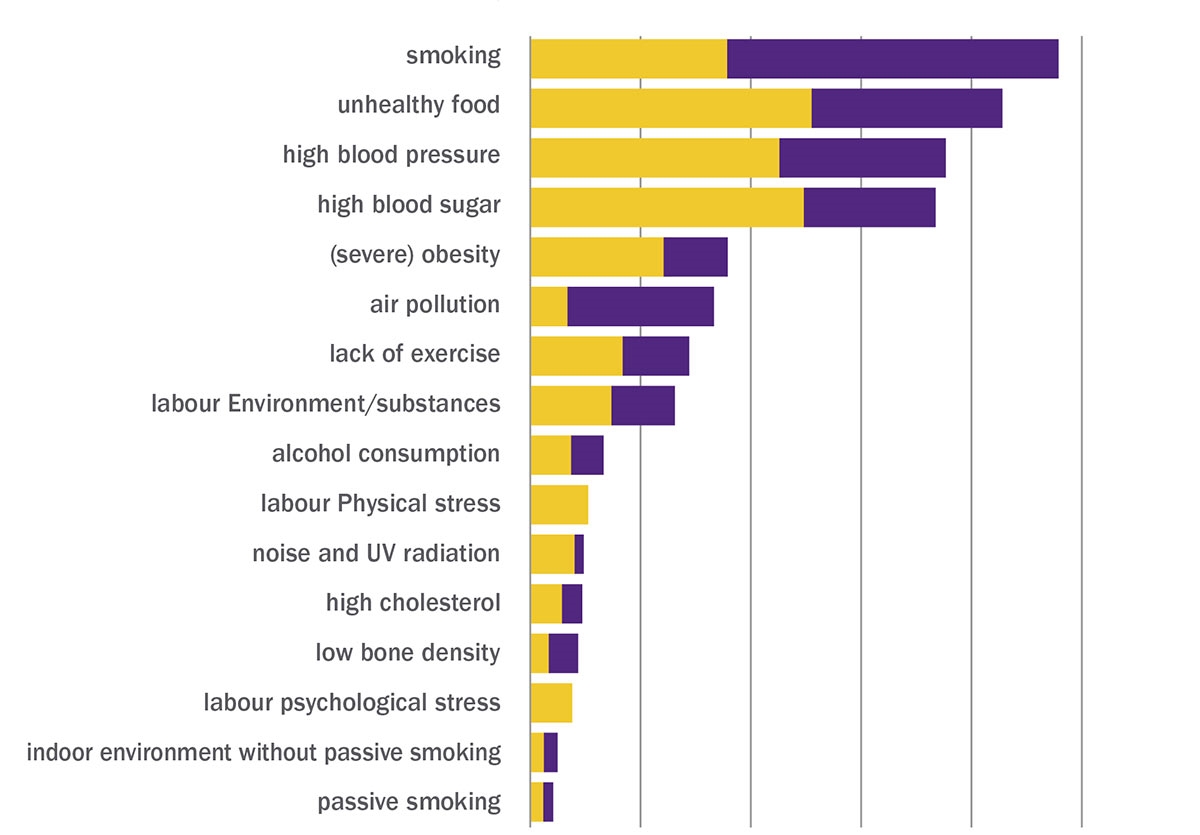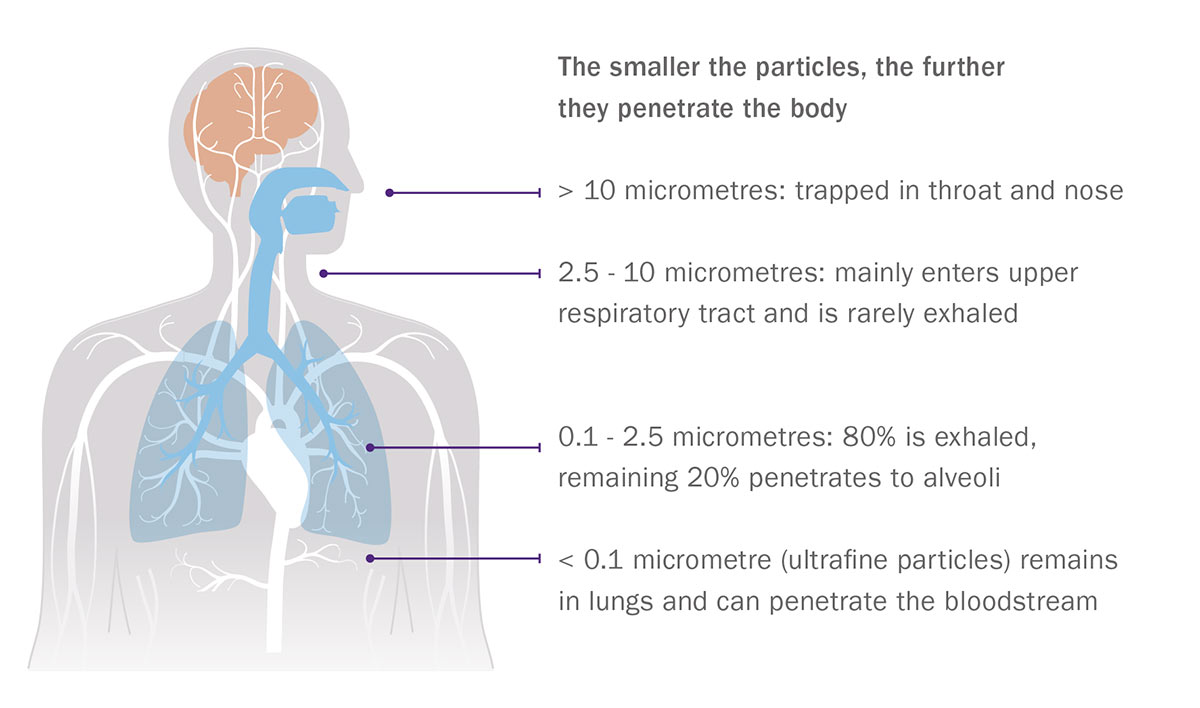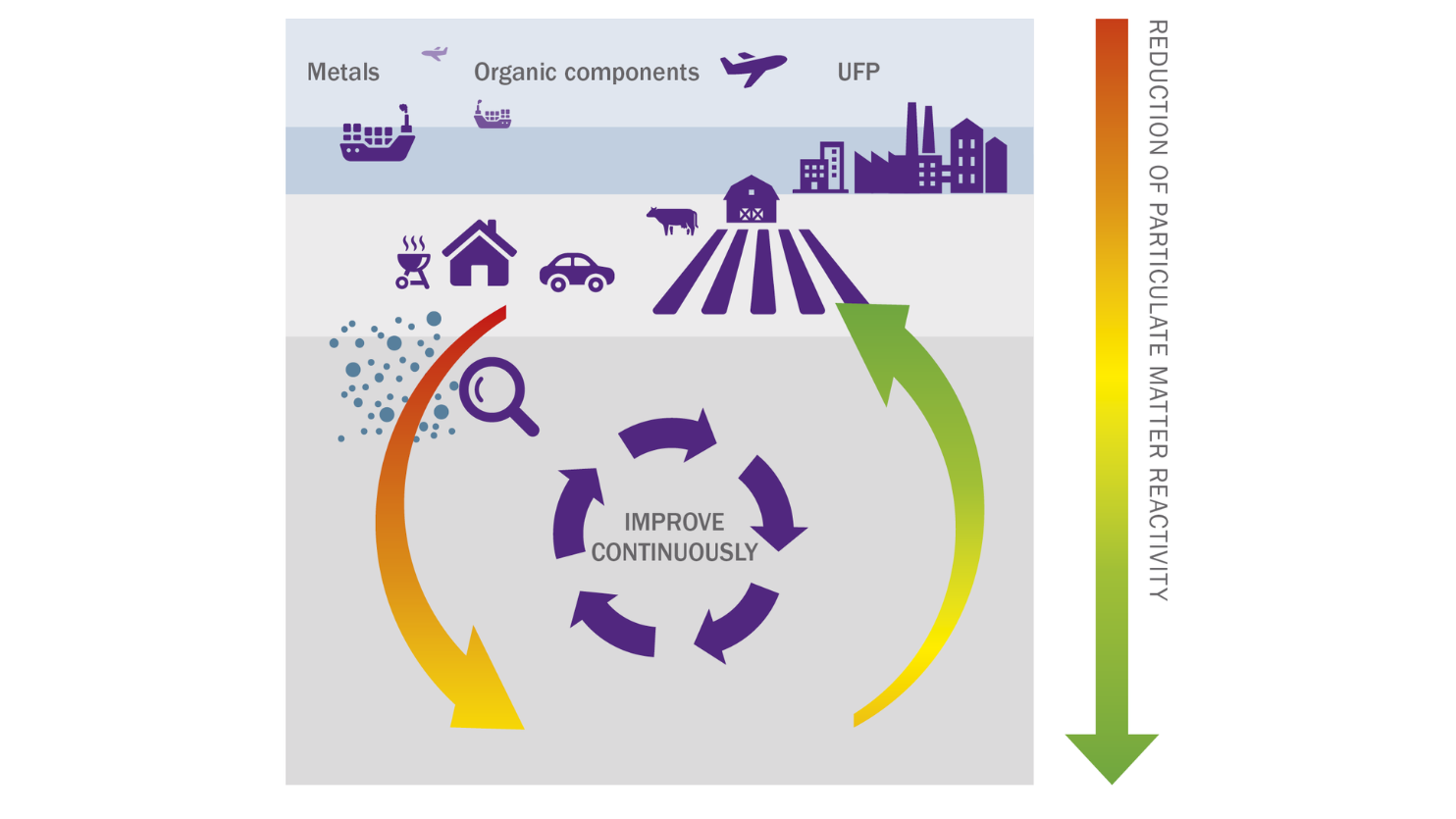
Particulate matter, an elusive problem - but what is particulate matter and ultrafine particles?
Exposure to particulate matter leads to human suffering and high costs. But what exactly is particulate matter? What makes it so dangerous, and what can you do about it? Ties Korstanje, programme manager Particulate matter at TNO, gives a ‘mini-lecture’ on particulate matter, and answers the 3 most important questions about particulate matter.
- 1. What is particulate matter and ultrafine particles?
- 2. How does particulate matter affect your health?
- 3. How is particulate matter formed and what are the sources?
1. What is particulate matter and ultrafine particules?
Particulate Matter is a catch-all term for all kinds of small particles floating in the air. Anything smaller than 10 micrometres is called particulate matter. Ultrafine particles is the smallest part of particulate matter. It is smaller than 0.1 micrometres, which is 1,000 times smaller than the diameter of a human hair. It is often abbreviated as UFP.
Direct emissions of particles into the air, we call primary particulate matter. These include man-made particles such as PAHs and metals. Secondary particulate matter is created by chemical reactions of gases in the atmosphere, such as ammonium nitrate from a combination of ammonia from intensive livestock farming and nitrogen dioxide from other sources.
2. How does particulate matter affect your health?
In the Netherlands, 11,000 people die prematurely every year because of air pollution. 4 out of 5 times, particulates are the cause. Particulate matter leads to human suffering. And don't underestimate the social costs. If you convert the loss of healthy life years into euros, then the particulate matter problem in the Netherlands represents a cost of between 10 to 15 billion euros per year. So it's not surprising that TNO has been researching this issue for years. We are developing technologies to map particulate matter and to combat it at its source.

Air pollution was the cause of 0.66 years lost and 0.17 healthy years lost in 2015. In this regard, it is worth noting that roughly 80 per cent of health damage from air pollution in the Netherlands is attributable to particulate matter. (Source graph: RIVM)
There is a difference between fine particulate matter and ultrafine particles: because ultrafine particles are so small, it behaves differently. The larger particulate matter (up to 10 micrometres) does not get as deep into the airways and lungs, but ultrafine particles matter do. It can even enter the alveoli and bloodstream.
There is growing evidence that ultrafine particles also pose a health risk. This applies to both short-term high exposure and long-term exposure to ultrafine particles. Hard evidence is still lacking, but links are being found to respiratory diseases such as COPD and asthma, cardiovascular disease and foetal development.

3. How is particulate matter formed and what are the sources?
The largest contribution to particulate emissions in the Netherlands comes from households (mainly due to wood burning), industry and agriculture. Other sources include maritime and inland waterway navigation, road traffic and construction. Different sources cause different particulate mixtures. And some mixtures are more harmful than others.
Particulate matter containing metals carries an increased risk to health. Major sources of metals are wear emissions from road traffic and industrial emissions.
Certain organic components in, for example, wood smoke, also pose health risks. Fine particulate mixtures containing harmful substances such as soot and PAHs can also be produced by other combustion processes. Ultrafine particles are mainly generated in combustion processes and therefore also contain several harmful substances.

Health benefits
TNO uses proprietary technology to measure (ultrafine) particulate emissions, and has developed mathematical models to predict dispersion and exposure.
For the Ministry of Infrastructure and Water Management, for example, we collect data on the emissions of particulate matter from diesel vehicles. We have also researched how the particulate emissions from fireplaces and stoves can be reduced. And we have been measuring (ultrafine) particulate matter at super site Cabauw for many years.
With this data on particulate matter we are now even better at analysing air filters and determining the composition and reactivity of particulate matter. Collecting this information gives us the opportunity to combat particulate emissions more effectively than we do currently.
This requires a different particulate matter approach. We have developed a 5-step plan with which we can achieve more health gains than we are already doing in the Netherlands.
Read our vision for a new particulate matter approach
Download the paper with a concrete 5-step plan
Get inspired
Industrial and conceptual construction


Reliable Structures


Building materials


Building Materials and Structures


Western North Brabant becomes hotspot for biobased building blocks for the construction industry



